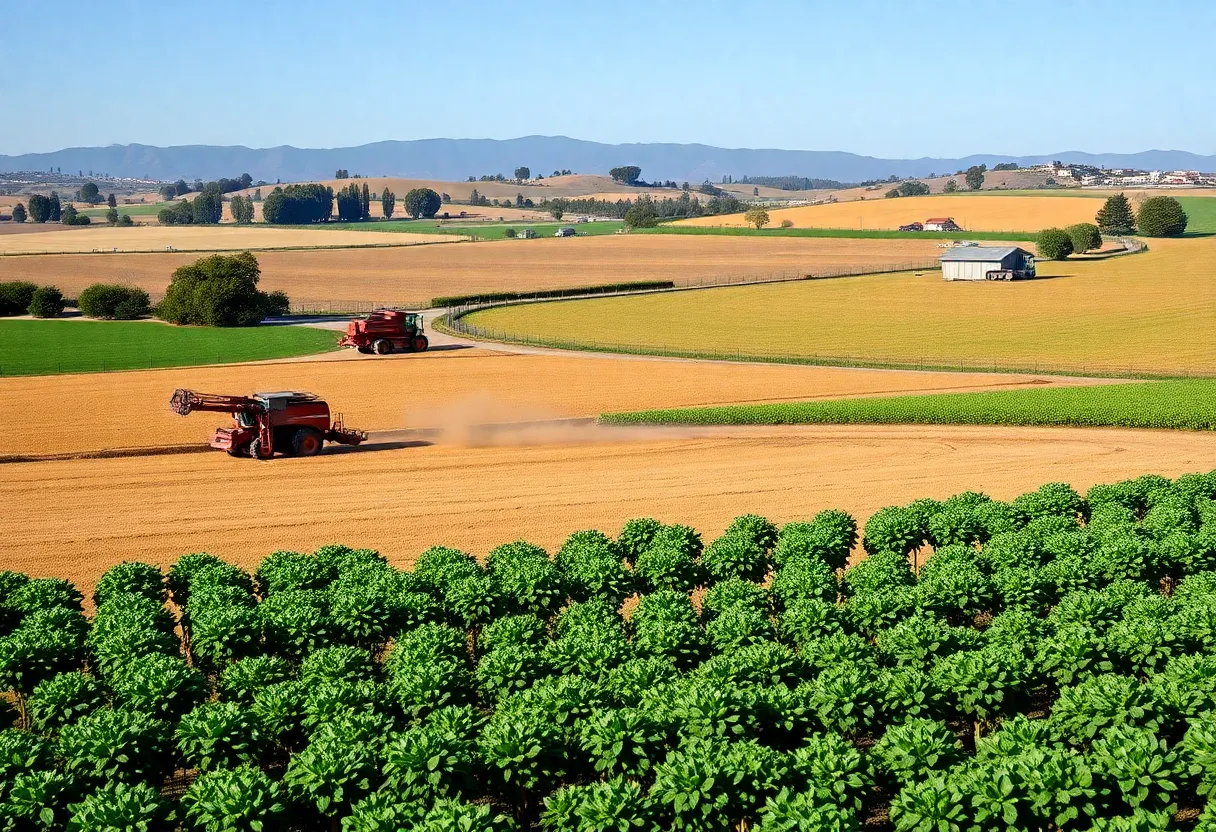California, August 26, 2025
News Summary
California farmers are experiencing a severe labor crisis, exacerbated by recent immigration raids that have left many agricultural jobs unfilled. With around 88,000 positions vacant annually, farmers like Larry Jacobs are turning to automation to cope with the shortage. However, stringent state regulations and the complexity of agricultural tasks still present significant challenges. Advocates argue for the need to reform outdated laws to harness technology effectively, while also addressing the critical role of migrant workers in maintaining the agricultural sector.
California farmers are grappling with a significant labor crisis as recent immigration raids leave many agricultural positions unfilled, putting enormous pressure on the industry. With approximately 88,000 agricultural jobs remaining vacant each year in the United States, farmers like Larry Jacobs are struggling to find enough workers to maintain their operations.
To combat this shortage, Jacobs has turned to automation, integrating robotics to help manage his farm with only half the human workforce he previously required. However, existing California state regulations currently prohibit the use of autonomous machines without human oversight, presenting a barrier to fully embracing this technological solution.
Tyler Niday, the CEO of Bonsai Robotics, highlights that the regulations governing autonomous machines were crafted in the 1970s. There is a growing movement among advocates to rewrite these laws to better align with current technological advancements. Notably, Bonsai Robotics’ machines are priced around $13,000, making them much more cost-effective than full-sized tractors which can cost around $80,000.
The labor crisis has been exacerbated by recent immigration raids, resulting in at least 35 arrests across farms in Ventura County. Farmers report increased absenteeism among workers due to fear of deportation. A statistic shows that 42% of U.S. crop farmworkers lack work authorization, with California holding the highest proportion of unauthorized workers.
In response to the labor shortage, Agriculture Secretary Brooke Rollins has emphasized the administration’s plan to focus on automation and regulatory reform. She has suggested that able-bodied adults on Medicaid could be a potential pool of labor replacements for migrant workers. However, this statement has drawn backlash from the agriculture industry, with many farmers expressing that such remarks are misinformed and insulting.
The average age of farmers in California is currently 58, sparking hope that automation technology could attract a new generation of growers. However, industry experts point out that many agricultural tasks, particularly those involving delicate fruits like strawberries, still require human expertise that machines cannot replicate. Previous attempts to fill agricultural vacancies with non-agricultural workers, such as welfare recipients, have resulted in crop losses and proved unsuccessful.
Critics voice concerns that current immigration policies could endanger the food supply by alienating the vital immigrant workforce essential for food production. In light of these challenges, the Trump administration has submitted requests to allow foreign workers to fill temporary visa roles in agriculture, indicating a recognition of the urgent necessity for labor in the sector.
Despite the push for automation, experts reiterate that it is not a one-size-fits-all solution. The necessity for nuanced policies and open dialogue regarding the legalization of essential migrant workers in agricultural and service roles is emphasized. This approach may offer a viable path forward in securing the future of food production in California.
FAQs
What is the current labor situation in California’s agriculture sector?
The state faces a serious labor crisis, with about 88,000 agricultural jobs going unfilled each year due to factors like recent immigration raids.
How are farmers responding to labor shortages?
Many farmers, such as Larry Jacobs, are turning to automation and robotics to maintain their farms with fewer human workers.
Why are current laws a barrier to using automated machines?
California regulations prohibit the use of autonomous machines without human oversight, limiting farmers’ ability to fully implement robotic solutions.
What impact have immigration raids had on the agricultural workforce?
Recent immigration raids have led to fear among workers, resulting in increased absenteeism and at least 35 arrests in farms located in Ventura County.
What are the demographics of farmworkers in the U.S.?
Approximately 42% of U.S. crop farmworkers lack work authorization, with California having the largest share of unauthorized workers.
What are the potential solutions to the labor crisis in agriculture?
Proposals include increasing automation, reforming immigration policies to legalize migrant workers, and recruiting able-bodied adults on Medicaid.
Key Features of the Labor Crisis in California Agriculture
| Feature | Details |
|---|---|
| Unsold Agricultural Jobs | Approximately 88,000 jobs remain unfilled annually |
| Automation Adoption | Farmers like Larry Jacobs using robots to cope with labor shortages |
| Regulatory Barriers | California laws restrict autonomous machine use without supervision |
| Immigration Raids Impact | At least 35 workers arrested, increased fear among farm laborers |
| Proportion of Unauthorized Workers | 42% of U.S. crop labor lacks authorization, highest in California |
| Proposed Solutions | Focus on automation, reform immigration policy, recruit Medicaid recipients |
Deeper Dive: News & Info About This Topic
- Los Angeles Times: Trump Administration’s Stance on Farmworkers
- Farmonaut: California’s Agricultural Labor Crisis
- CBS News: Farming Automation and Migrant Workers
- Wikipedia: Agricultural Labour
- Google Search: California Agriculture Labor Shortage

Author: STAFF HERE HUNTINGTON BEACH
The Huntington Beach Staff Writer represents the experienced team at HEREHuntingtonBeach.com, your go-to source for actionable local news and information in Huntington Beach, Orange County, and beyond. Specializing in "news you can use," we cover essential topics like product reviews for personal and business needs, local business directories, politics, real estate trends, neighborhood insights, and state news affecting the area—with deep expertise drawn from years of dedicated reporting and strong community input, including local press releases and business updates. We deliver top reporting on high-value events such as the Huntington Beach Surf City USA Marathon, the U.S. Open of Surfing, Fourth of July celebrations at the Huntington Beach Pier, and community festivals at Huntington Beach Central Park. Our coverage extends to key organizations like the Huntington Beach Chamber of Commerce and Visit Huntington Beach, plus leading businesses in retail, hospitality, and outdoor recreation that drive the local economy. As part of the broader HERE network, including HEREAnaheim.com, HERECostaMesa.com, HERESantaAna.com, and HERELosAngeles.com, we provide comprehensive, credible insights into Southern California's dynamic landscape.





